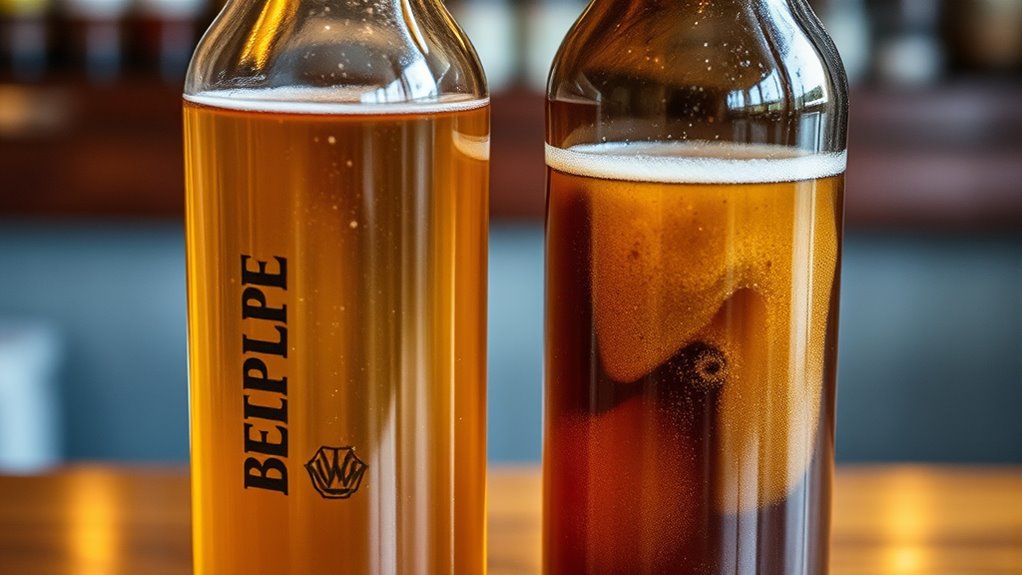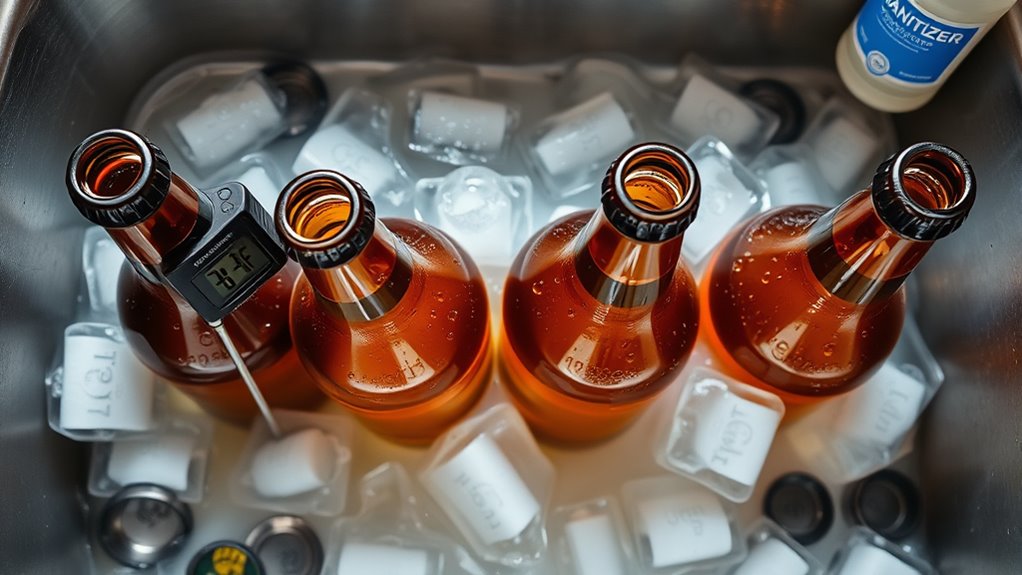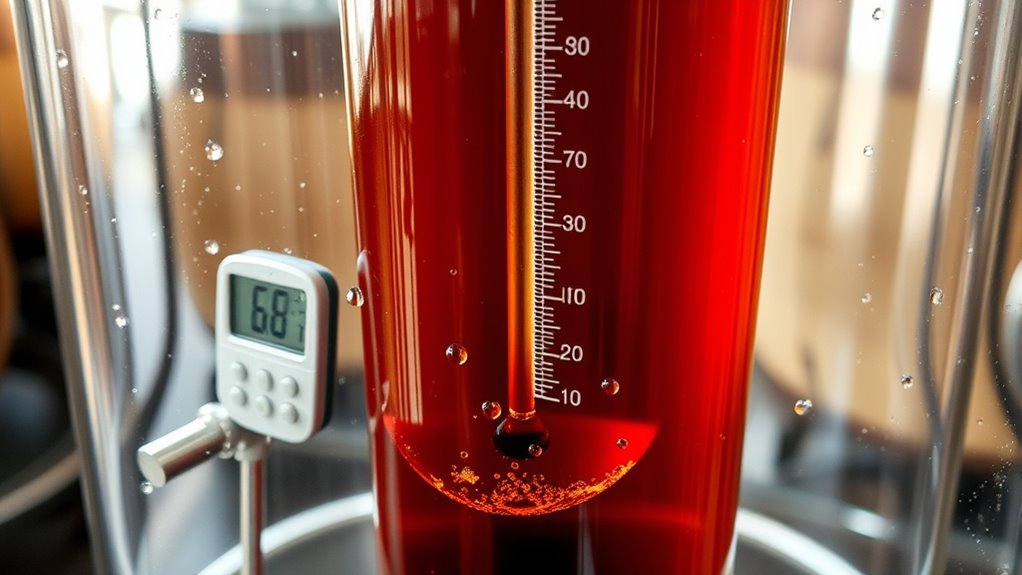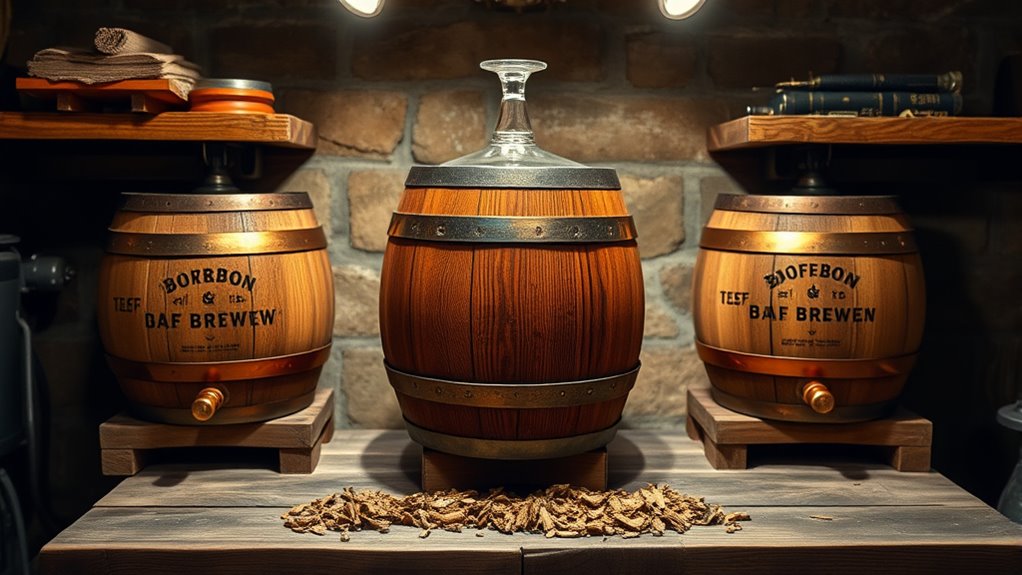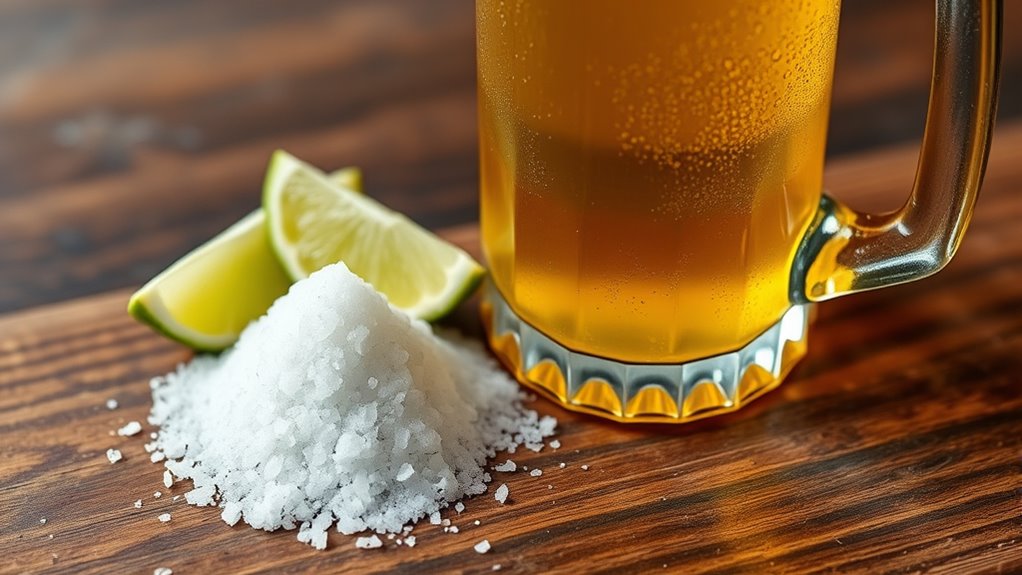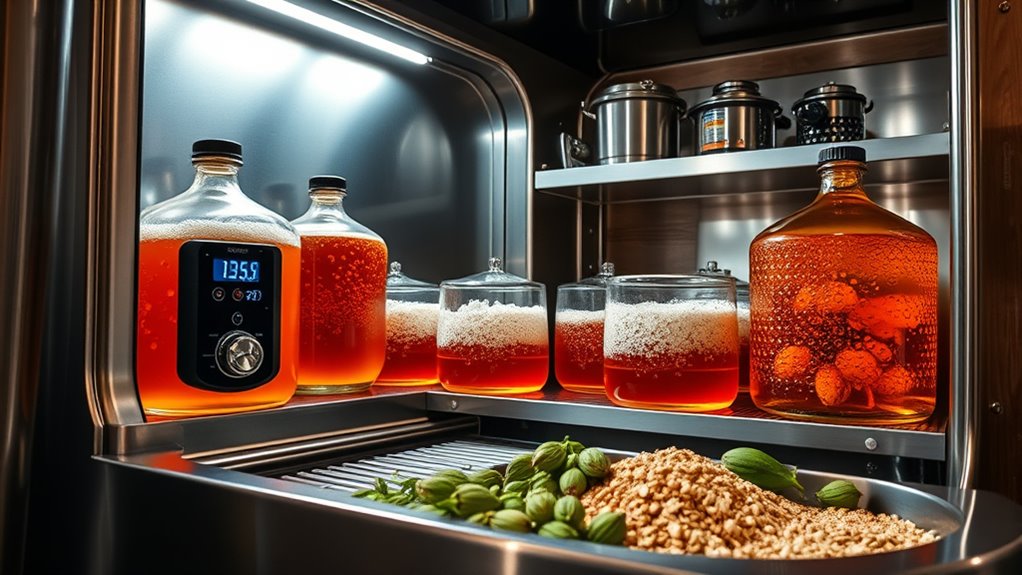Oxygen ruins stored beer by causing oxidation, which leads to off-flavors like wet cardboard and vinegar. Even minimal exposure to oxygen, as low as 50 parts per billion, can negatively affect freshness and diminish aromatics. Transferring beer, poor seals, or excessive splashing during bottling introduces unwanted oxygen. To preserve beer quality, minimize oxygen contact through proper techniques. Helpful hints include purging vessels with CO2 and using oxygen-absorbing caps. Continuing on, you’ll uncover more strategies for maintaining your beer’s integrity.
At a Glance
- Oxygen exposure causes off-flavors in beer, such as wet cardboard and vinegar, diminishing its overall quality and freshness.
- It alters the aroma and hop character, leading to a stale taste profile that negatively impacts consumer perception.
- Dissolved oxygen levels above 50 ppb can initiate unwanted oxidation reactions, resulting in browning and spoilage.
- Excessive oxygen introduction occurs during transfers, bottling, and poor sealing, compromising the beer’s stability and flavor.
- Effective oxygen management strategies, like CO2 purging and minimal headspace, are essential for preserving stored beer quality.
Understanding Oxidation in Beer
When you brew beer, managing oxygen exposure is essential, as it can lead to oxidation, which negatively affects the flavor and aroma of your product.
Oxygen can cause off-flavors like wet cardboard, green apple, and vinegar. Even minimal dissolved oxygen, as low as 50 ppb, can trigger these undesirable flavors.
Oxidation alters aroma, diminishes hop character, and can result in browning, compromising beer quality. To enhance preservation and shelf life, employ effective oxygen management strategies.
Use inert gases during packaging and minimize exposure during transfers. Keeping dissolved oxygen levels low is key to maintaining the integrity of your beer.
Helpful Hints:
- Always purge containers with inert gas.
- Seal bottles tightly after filling.
- Monitor oxygen levels regularly.
- Use fresh ingredients to minimize oxidation effects.
Sources of Oxygen Introduction
Understanding how oxygen enters your beer during the brewing process is essential for maintaining its quality. Several sources contribute to this issue.
First, transferring beer between vessels, like from fermenters to bottling buckets, often introduces unwanted oxygen. During the bottling process, excessive splashing can greatly increase oxygen exposure.
Additionally, leaks in siphon or keg systems, along with poor seals on bottle caps, allow air to infiltrate, compromising beer flavor. Even minimal oxygen introduction can lead to oxidation-related off-flavors, undermining flavor stability. Proper sanitization of equipment can further minimize the risk of contamination from bacteria, ensuring that your beer remains fresh and flavorful.
Leaks in siphon and keg systems, along with poor seals, can introduce oxygen and compromise your beer’s flavor stability.
By minimizing these risks, you can help preserve the integrity of your finished beer.
Helpful Hints:
- Use gentle transfer methods.
- Check seals regularly.
- Avoid excessive splashing during filling.
Impacts of Oxygen on Beer Quality
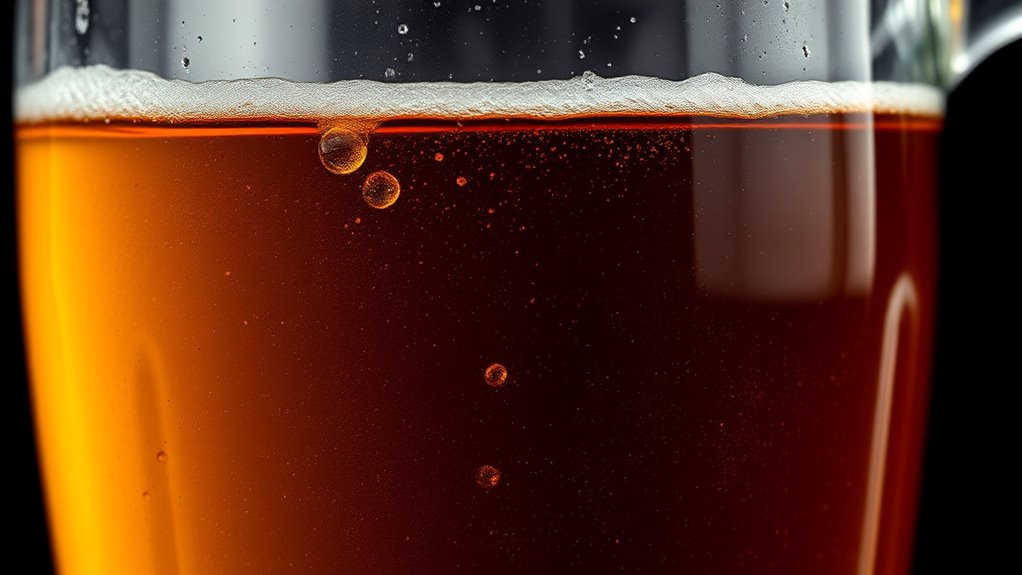
Oxygen exposure can dramatically alter the quality of your beer, leading to off-flavors and diminished freshness.
Even minimal contact with oxygen can result in oxidation, creating undesirable compounds that negatively impact flavor stability. You might notice stale, cardboard-like notes reminiscent of chewing on a textbook.
Additionally, oxidation can cause a browning effect, reducing overall beer freshness. To maintain high beer quality and extend shelf life, it’s essential to keep dissolved oxygen levels below 50 ppb.
Interestingly, lightstruck flavors can also arise from other factors like yeast and sulfur compounds, which can be confused with the effects of oxidation. By being mindful of oxygen exposure, you can preserve the integrity and taste of your beer, ensuring a satisfying drinking experience.
Helpful Hints:
- Store beer upright to minimize oxygen contact.
- Use airtight containers for storage.
- Drink fresh, especially hop-forward beers.
Mechanisms of Oxidation
The process of oxidation in beer begins the moment oxygen makes contact with it, initiating a series of chemical reactions that can drastically alter its flavor and aroma.
Oxygen acts as an oxidizing agent, leading to the formation of off-flavors like wet cardboard and green apple. Ethanol oxidizes into acetaldehyde, which can further turn into acetic acid, negatively impacting the beer flavor profile. Even minimal exposure can create stale beer.
Additionally, hop compounds convert into fatty acids, resulting in soapy flavors. Once oxygen is present, the changes are irreversible, permanently affecting the sensory experience of your beer.
Helpful Hints:
- Store beer in airtight containers.
- Limit exposure to oxygen.
- Be mindful of storage conditions.
Best Practices for Minimizing Oxygen Exposure
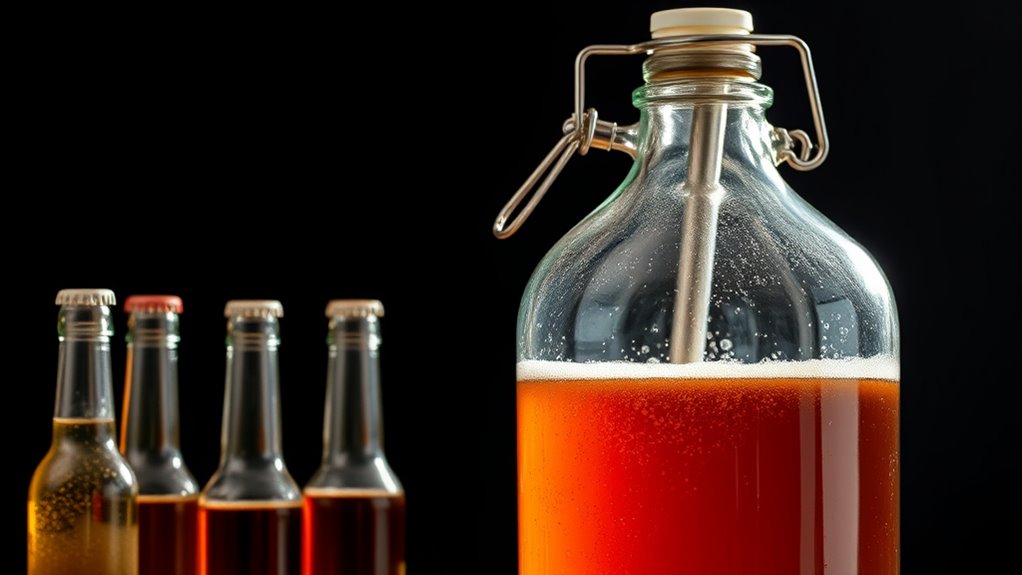
Minimizing oxygen exposure is critical for maintaining the quality of your beer, especially after it’s been brewed.
Minimizing oxygen exposure is essential to preserve your beer’s quality post-brewing.
Here are some best practices to follow:
- Limit transfers, as each introduces oxygen.
- Use CO2 purging during bottling to displace oxygen, keeping levels below 50 ppb for flavor stability.
- Choose oxygen-absorbing bottle caps and guarantee a proper seal to prevent oxygen ingress.
- Keep headspace minimal, ideally around an inch, to reduce oxygen volume.
- Avoid splashing while filling bottles or kegs, as it heightens the risk of oxidation reactions that can compromise your beer’s taste. Additionally, proper bottling techniques are essential for preserving beer flavor, ensuring that your brew remains fresh and enjoyable over time.
Transfer Techniques to Reduce Oxygen Pickup
When you transfer beer from one vessel to another, it’s essential to use techniques that minimize oxygen pickup, as even small amounts can negatively affect flavor.
Here are some helpful hints:
- Use closed transfer systems to move beer without air exposure.
- Purge kegs and bottles with CO2 to displace oxygen before filling.
- Maintain airtight connections and seals during transfers to prevent leaks.
- Employ a submerged siphon to minimize splashes and agitation.
Additionally, ensuring that all equipment is properly sanitized before use can help prevent contamination that might exacerbate the effects of oxygen on flavor.
Equipment Maintenance for Oxygen Control
Maintaining your brewing equipment is essential for controlling oxygen exposure, which can spoil your beer.
Regularly inspect your brewing equipment for damage, as leaks or cracks can introduce oxygen during transfers. Replace tri-clamp gaskets every six months to guarantee airtight seals and prevent oxygen ingress.
Use properly sized Oetiker clamps instead of worm clamps for secure connections. Implement Clean In Place (CIP) procedures under pressure for larger tanks to maintain cleanliness and minimize oxygen ingress.
Finally, flush hoses with CO2 before transfers to reduce dissolved oxygen exposure and guarantee airtight connections throughout the brewing process. Additionally, incorporating fermentation products can enhance your brewing setup and help maintain optimal conditions.
Helpful Hints:
- Check equipment regularly.
- Maintain gaskets every six months.
- Use Oetiker clamps for secure connections.
Role of Yeast in Managing Oxygen
Understanding the role of yeast in managing oxygen is key to producing high-quality beer. Yeast plays a vital part in fermentation, but its ability to handle oxygen diminishes post-fermentation.
Here are some helpful hints for effective yeast management:
- Promote yeast growth during initial fermentation with controlled oxygen levels.
- Monitor anaerobic conditions once fermentation begins to enhance alcohol production.
- Limit oxygen exposure during storage to prevent off-flavors from oxidization.
- Maintain CO2 levels to protect beer quality and preserve flavor stability. Additionally, it is crucial to monitor yeast health to ensure optimal fermentation performance and flavor consistency throughout the brewing process.
Community Insights on Preventing Oxidation
Preventing oxidation in beer is a shared concern among brewers, as even small amounts of oxygen can lead to undesirable flavors and spoilage.
To effectively manage oxygen exposure, consider implementing these strategies:
- Use closed transfer systems to maintain airtight connections and minimize oxygen in your finished product.
- Purge kegs and bottles with CO2 before filling to displace dissolved oxygen.
- Avoid splashing during transfers by practicing gentle handling techniques.
- Regularly monitor oxygen levels for quality control, utilizing measurement tools to track dissolved oxygen.
Additionally, maintaining fresh, clean raw materials such as water and malt can help reduce the risk of oxidation during the brewing process.
